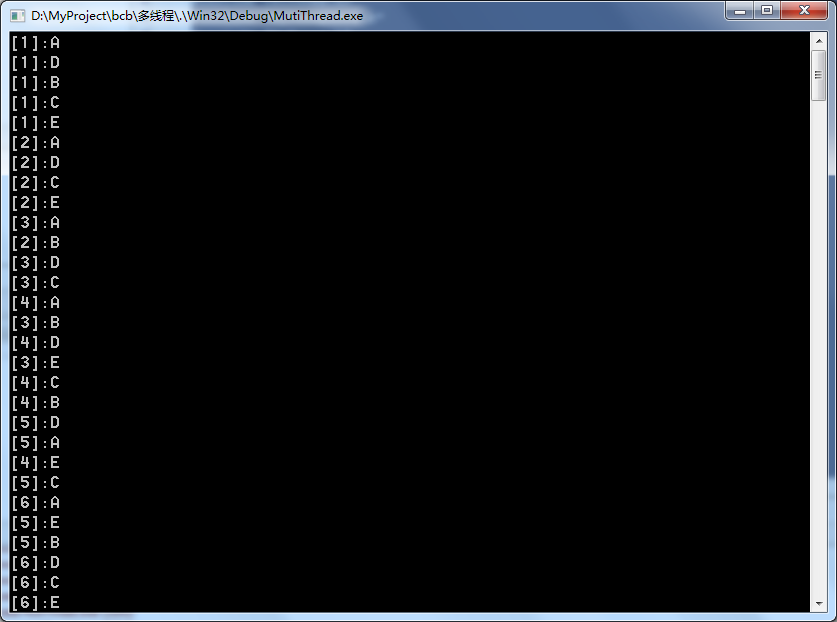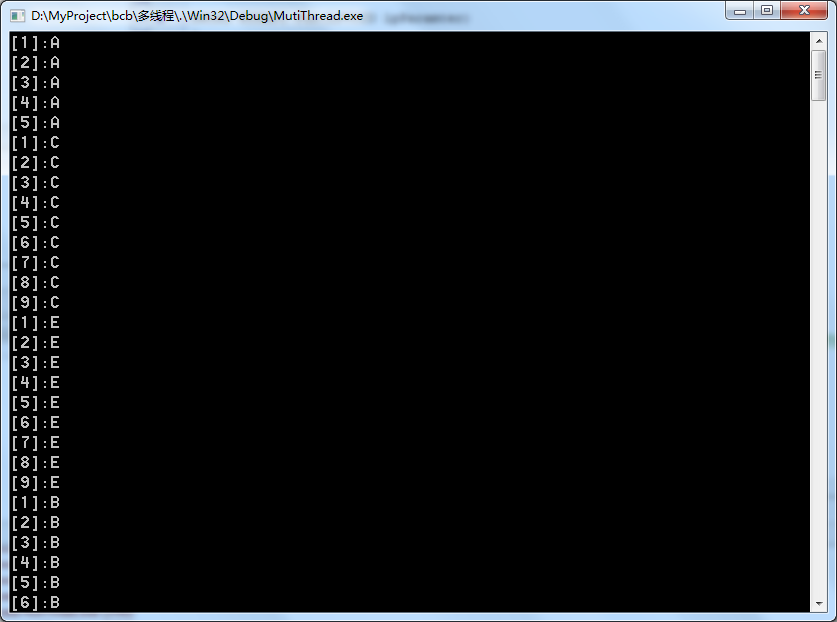一、Win32平台
1、相关头文件和接口
1 #include <windows.h>
2
3 CRITICAL_SECTION cs;//定义临界区对象
4 InitializeCriticalSection(&cs);//初始化临界区
5 EnterCriticalSection(&cs);//进入临界区
6 LeaveCriticalSection(&cs);//离开临界区
7 DeleteCriticalSection(&cs);//删除临界区
2、Win32源码
1 //=====================MyCriticalSection.h===========================
2 #ifndef _My_CRITICAL_SECTION_H
3 #define _My_CRITICAL_SECTION_H
4
5 #include <windows.h>
6 //对临界区同样进行封装
7 class CMyCriticalSection
8 {
9 public:
10 CMyCriticalSection()
11 {
12 InitializeCriticalSection(&m_cSection);
13 }
14
15 void Lock()
16 {
17 EnterCriticalSection(&m_cSection);
18 }
19
20 void UnLock()
21 {
22 LeaveCriticalSection(&m_cSection);
23 }
24
25
26 //利用析构函数删除临界区对象
27 virtual ~CMyCriticalSection()
28 {
29 DeleteCriticalSection(&m_cSection);
30 }
31 private:
32 CRITICAL_SECTION m_cSection;
33 };
34
35 class CCriticalSectionAutoLock
36 {
37 public:
38 //利用构造函数上锁,即进去临界区
39 CCriticalSectionAutoLock(CMyCriticalSection *mySection)
40 :pCMySection(mySection)
41 {
42 pCMySection->Lock();
43 }
44
45 //利用析构函数解锁,即离开临界区
46 virtual ~CCriticalSectionAutoLock()
47 {
48 pCMySection->UnLock();
49 }
50 private:
51 CMyCriticalSection *pCMySection;
52 };
53
54 #endif
1 #include <iostream>
2 #include <windows.h>
3 #include "MySemaphore.h"
4 #include "MyMutex.h"
5 #include "MyCriticalSection.h"
6 using namespace std;
7
8 //HANDLE g_hSemaphore = NULL;
9 //HANDLE g_hMutex = NULL;
10
11 CMySemaphore MySemaphore; //信号量
12 CMyMutex MyMutex; //互斥量
13 CMyCriticalSection MyCriticalSection; //临界区
14
15 DWORD WINAPI Fun(LPVOID lpParamter)
16 {
17 string strPrint((const char*)lpParamter);
18 int iRunTime = 0;
19 //执行100次跳出
20 while(++iRunTime<10)
21 {
22 {
23 CCriticalSectionAutoLock cLock(&MyCriticalSection);
24 cout <<"["<< iRunTime <<"]:"<< strPrint.c_str()<<endl;
25 }
26 Sleep(1); //若去掉此句 可能导致其他线程无法进入临界区,因为 cLock在这之前析构,离开临界区
27
28 }
29 return 0;
30 }
31
32 int main()
33 {
34 //创建五个子线程
35 string str1 = "A";
36 string str2 = "B";
37 string str3 = "C";
38 string str4 = "D";
39 string str5 = "E";
40
41 HANDLE hThread1 = CreateThread(NULL, 0, Fun, (void*)str1.c_str(), 0, NULL);
42 HANDLE hThread2 = CreateThread(NULL, 0, Fun, (void*)str2.c_str(), 0, NULL);
43 HANDLE hThread3 = CreateThread(NULL, 0, Fun, (void*)str3.c_str(), 0, NULL);
44 HANDLE hThread4 = CreateThread(NULL, 0, Fun, (void*)str4.c_str(), 0, NULL);
45 HANDLE hThread5 = CreateThread(NULL, 0, Fun, (void*)str5.c_str(), 0, NULL);
46
47 //关闭线程
48 CloseHandle(hThread1);
49 CloseHandle(hThread2);
50 CloseHandle(hThread3);
51 CloseHandle(hThread4);
52 CloseHandle(hThread5);
53
54 getchar();
55 // system("pause");
56 return 0;
57 }

执行结果:
这是加上Sleep(1);的运行结果,没有加上Sleep(1);的执行结果如下:

从结果我们可以看出如果没有加上Sleep(1),即在离开临界区后进行休眠,其他线程进入临界区的概率会大大降低,原因可能是由于While循环在不停的循环时,其他线程还没有那么快能够进入临界区,因此在这种情况下想让所有的线程都有机会进入临界区,则需要在离开临界区之后做短暂休眠即可。
3、Linux平台
在Linux环境下,没有Windows下的临界区的概念,但是也可以利用互斥量实现该功能。Linux下的API如下,在前面的博文里也有讲到过
1 #include <pthread.h>
2 int pthread_mutexattr_init(pthread_mutexattr_t *attr); /*初始化函数*/
3 int pthread_mutexattr_destroy(pthread_mutexattr_t *attr);/*去初始化函数*/
4
5 int pthread_mutex_lock(pthread_mutexattr_t *attr)/*加锁*/
6 int pthread_mutex_unlock(pthread_mutexattr_t *attr)/*解锁*/
但是两者并不是完全一样的,他们的区别总结如下:
1、临界区只能用于对象在同一进程里线程间的互斥访问;互斥体可以用于对象进程间或线程间的互斥访问。
2、临界区是非内核对象,只在用户态进行锁操作,速度快;互斥体是内核对象,在核心态进行锁操作,速度慢。
3、临界区和互斥体在Windows平台都下可用;Linux下只有互斥体可用。
4、临界区:通过对多线程的串行化来访问公共资源或一段代码,速度快,适合控制数据访问。
5、互斥量:为协调共同对一个共享资源的单独访问而设计的。

